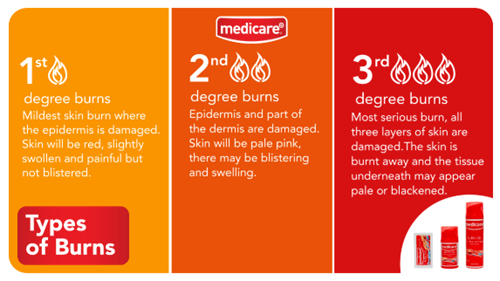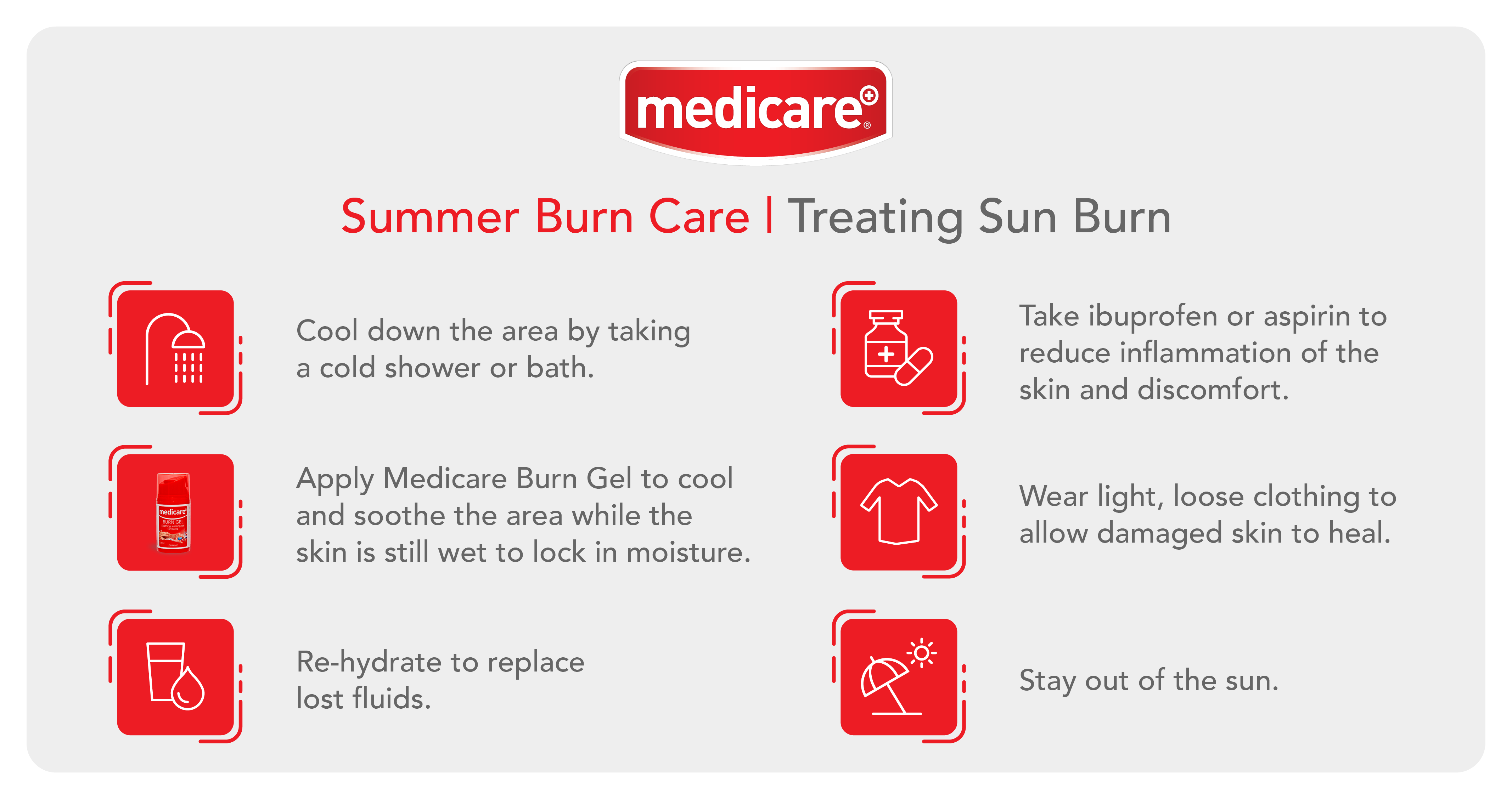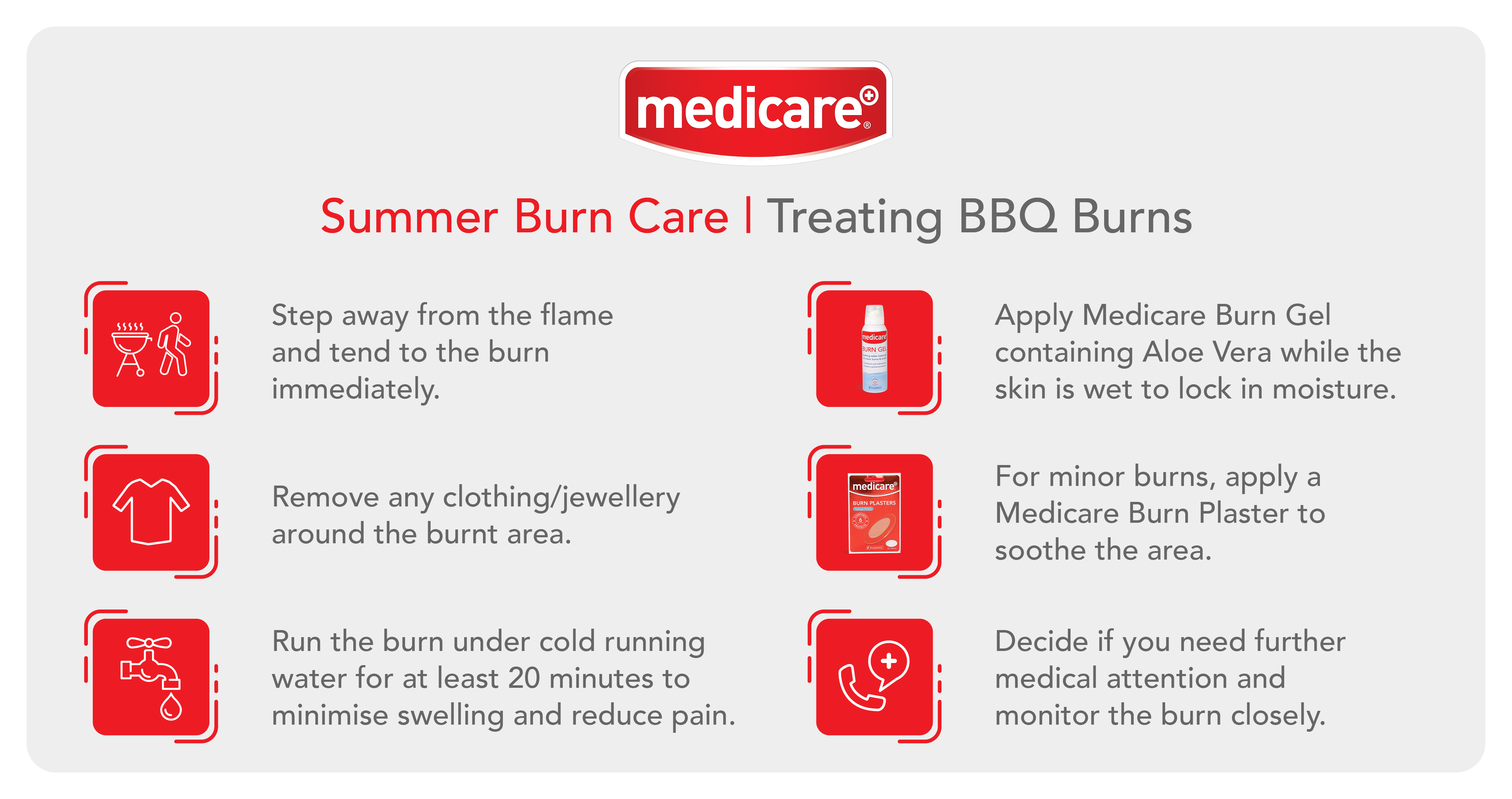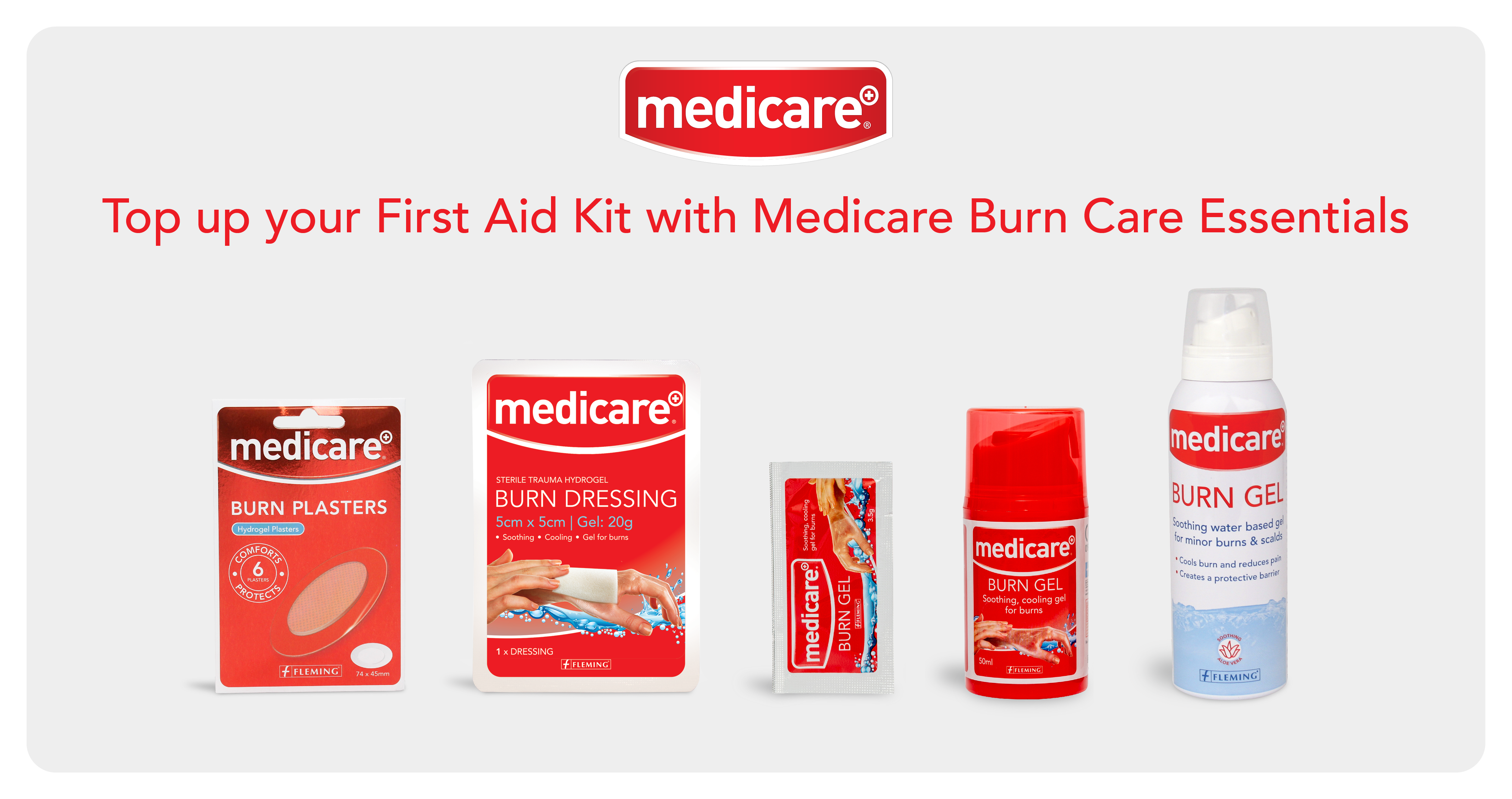Headlines
Summer Burn Care: Sunburn & BBQ Burns
15 June 2022

Summer has begun which means BBQ's, sunny beach day and plenty of sun exposure. Safety and precaution should be practiced when outdoors, around naked flames, grills and anything that involves intense heat.
A burn is an unforgettable pain and can present itself in many forms. Each year, there are burn accidents involving sun exposure, BBQ's and campfires. Familiarise yourself with some of our top safety tips so you are ready to prevent, identify and treat any summer burn.
Sunburn:
Skin cancer is the most common cancer in Ireland and the 5th most common type in the UK. In nine out of ten of these cases, the cancer is caused by harmful UV rays from the sun or sunbeds. The danger of sunburn goes beyond a red and painful burning sensation on the skin. The damage causes lasting effects which are both visible and invisible, so it is important to protect your skin in the best way possible by using SPF and avoiding sunbeds.
The Science Behind Sunburn:
Sun-burn occurs when the skin has been overexposed to harmful ultraviolet (UV) light. This can come from using sunbeds and directly from the sun. The radiation that causes sunburn cannot be felt, making it easier to get burnt without even realising it. Even on a cloudy day, the skin can still be burnt. The way your skin reacts to sunburn is your body's way of trying to repair it. It is a sign that the DNA skin cells have been damaged.
Once burnt, the signs of sunburn can show up as little as 11 minutes after and the skin will gradually show the intensity of the burn over the next 2 to 6 hours depending on the severity and skin type. Most sun-burns are classified as first-degree burns which penetrate the outer layer of the skin only. The burn is red, painful and the skin feels stiff and dry. Second-degree burns are more severe and damaging to the dermis,-(the outer layer of the skin). Skin blisters can take a few weeks to heal. Third-degree burns are often caused by a scalding liquid, naked flame, or chemical source. Symptoms include swelling in the area, lack of pain as nerve endings have been destroyed, and discolouration of the skin (black, white, brown, or yellow skin).

Protect Your Skin Against The Sun's Harmful Rays In Four Simple Steps:
Steps To Treat A Summer Burn:

Steps To Treat A BBQ Burn:


Useful Links:
Sunburn:
Skin cancer is the most common cancer in Ireland and the 5th most common type in the UK. In nine out of ten of these cases, the cancer is caused by harmful UV rays from the sun or sunbeds. The danger of sunburn goes beyond a red and painful burning sensation on the skin. The damage causes lasting effects which are both visible and invisible, so it is important to protect your skin in the best way possible by using SPF and avoiding sunbeds.
The Science Behind Sunburn:
Sun-burn occurs when the skin has been overexposed to harmful ultraviolet (UV) light. This can come from using sunbeds and directly from the sun. The radiation that causes sunburn cannot be felt, making it easier to get burnt without even realising it. Even on a cloudy day, the skin can still be burnt. The way your skin reacts to sunburn is your body's way of trying to repair it. It is a sign that the DNA skin cells have been damaged.
Once burnt, the signs of sunburn can show up as little as 11 minutes after and the skin will gradually show the intensity of the burn over the next 2 to 6 hours depending on the severity and skin type. Most sun-burns are classified as first-degree burns which penetrate the outer layer of the skin only. The burn is red, painful and the skin feels stiff and dry. Second-degree burns are more severe and damaging to the dermis,-(the outer layer of the skin). Skin blisters can take a few weeks to heal. Third-degree burns are often caused by a scalding liquid, naked flame, or chemical source. Symptoms include swelling in the area, lack of pain as nerve endings have been destroyed, and discolouration of the skin (black, white, brown, or yellow skin).

Protect Your Skin Against The Sun's Harmful Rays In Four Simple Steps:
- Use SPF everyday, even on cloudy days. A high amount of UV light from the sun can penetrate through the clouds. After applying your SPF, allow 30 minutes before sun exposure and reapply every 2 hours. After swimming, reapply regardless of how long ago you last applied to stay protected.
- Limit your sun exposure between 10:00am and 16:00pm. This is when the sun's rays are the most intense.
- Check the UV index. The index provides a daily forecast of the expected risk of overexposure to the sun. Stay out of the sun at times when the UV index is high.
- Find shaded areas when enjoying the outdoors. Combine this with your SPF for the ultimate protection.
Steps To Treat A Summer Burn:

- Cool down the area- Taking a quick, cool shower will soothe the damaged skin and provide relief. Do not bathe the skin for too long as it can be drying and lead to further skin irritation.
- Use a good moisturiser- Use an aloe vera based moisturiser ideally when the skin is damp to lock in moisture and promote faster healing of the skin. The Medicare Burn Gel with Aloe Vera is used to treat sunburns, minor burns and scalds. The gel is water-based with aloe vera to help heal and reduce discomfort of the skin after a bad burn. With bag-on-valve technology, the gel allows you to use every last drop and stays fresher for longer. For less intense burns, the Medicare Aloe Vera Gel is a natural way to restore hydration to the skin. It is a light, non-greasy gel which easily absorbs into the skin. A top tip is to leave your burn gel/ aloe vera in the fridge. This will add further relied to the damaged area.
- Take a pain killer- If the burn is swollen and red, taking ibuprofen/aspirin will help to reduce discomfort.
- Wear loose clothing- To allow healing, wear light and comfortable baggy clothing.
- Stay out of the sun- Getting burnt over sunburn can be dangerous and cause a lot of further damage to the skin including blistering, swelling and flu-like symptoms. It is advised to avoid the sun for a few days to allow the skin to heal and get rid of the sun-damaged cells. If avoiding the sun isn't possible, wear clothing over the burnt area to cover and protect it along with a high SPF for extra protection.
- Re-hydrate- Sunburn causes fluid to be drawn to the skin's surface taking it away from the rest of the body. It is important to replace this fluid and to stay hydrated.
- Contact a healthcare professional if your skin is blistered/ swollen or if you are experiencing flu-like symptoms.
Steps To Treat A BBQ Burn:

- Keep your distance- Prolonged heat to your skin can worsen the type of burn so it is important to treat it immediately.
- Remove anything around the burnt area - this includes clothing, jewelry etc.
- Run the burn under a cold tap- Do this for 15-20 minutes to relieve pain and minimise swelling of the area.
- Apply burn gel- The Medicare Burn Gel is perfect to treat minor burns and scalds. Keep it in the fridge so it provides more relief.
- Cover the burn with a plaster or a dressing depending on the severity and size of the burn. The Medicare Burn Plasters are ideal for minor and superficial burns. They contain hydrogel which helps to cool and soothe the burn while also preventing infection. The Medicare Burn Dressings are perfect for larger burns. They come in a variety of sizes and promote healing to the skin.

Click here to browse our entire Burn Care range and ensure you are following us on social media for even more top tips and tricks.
Useful Links:
- https://www.skincancer.org/risk-factors/sunburn/
- https://www.mayoclinic.org/diseases-conditions/sunburn/symptoms-causes/syc-20355922
